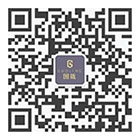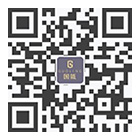Jiao Hanwei: The phenomenon of brand-name management is right and wrong
As far as innovation is concerned, operators can usually be divided into two categories: one is constantly innovating and leading innovation; The other is accustomed to imitate, follow the innovation. When the operator develops the habit of continuous innovation, its innovation ability will become stronger and stronger, and the competitive advantage will become more and more obvious. When operators develop the habit of imitation, they will lose the ability to innovate to a certain extent, and the competitive disadvantage is getting bigger and bigger. Innovation will form a habit, imitation will become a habit; The former is a virtuous circle, the latter is a vicious circle, the final result is to achieve the survival of the fittest in the competition. It is generally believed that there is a contradiction between innovation and imitation when there is a market. At the same time, many industries in China are still in the early stage of development, many enterprises have limited innovation strength and innovation ability, and the necessary learning is also the only stage of enterprise development. If you are an innovative operator, you have to know where your rights and interests are. Consider how to better protect their rights and interests? If you are a copycat operator, you have to think about where are the boundaries of your behavior? Careful to avoid business losses and jail time for copying? The important significance of law is to guide operators to achieve business objectives in a proper way within a specific boundary. Jiao Hanwei, lawyer of Shanghai Guolinghouse Law Firm, will discuss the boundary problem of the brand-name phenomenon from two perspectives of law and management, for reference of operators.
About the boundary of trademark use.
In the phenomenon of near brand name, near product famous brand is one of the most common forms. A trademark is a commercial sign used to distinguish the different sources of goods and services. It is composed of words, graphics, letters, numbers, three-dimensional signs, color combinations, sounds or the combination of the above elements. It is an important component and carrier of a brand and plays an important role in distinguishing the sources of goods or services. The use of trademarks identical or similar to registered trademarks on the same or similar products can easily cause consumers to misrecognize them and cause market confusion. China's trademark law stipulates that the same trademark is used in the same kind of goods without the permission of the trademark registrant. Without the permission of the trademark registrant, the use of a trademark similar to its registered trademark on the same kind of goods, or the use of a trademark identical with or similar to its registered trademark on similar goods, which is likely to cause confusion, shall be an infringement of the exclusive right to use a registered trademark. China's Trademark Law also stipulates that the amount of compensation for infringement of the exclusive right to use a trademark shall be determined according to the actual loss suffered by the right holder as a result of the infringement. If the actual loss is difficult to determine, it may be determined in accordance with the interests the infringer has obtained as a result of the infringement. If it is difficult to determine the loss of the right holder or the benefit obtained by the infringer, it shall be reasonably determined by reference to the multiple of the license fee of the trademark. Where it is difficult to determine the actual losses suffered by the right holder due to the infringement, the benefits gained by the infringer due to the infringement, or the royalties for the license of the registered trademark, the people's court shall, according to the circumstances of the infringement, make a judgment to pay compensation of not more than five million yuan. Therefore, without the permission of the trademark registrant, unauthorized use of the same or similar trademarks on the same or similar goods, to bear infringement liability, the specific form of liability for stopping the infringement, compensation for losses, etc. In addition, China's criminal Law stipulates that whoever, without the permission of the owner of the registered trademark, uses the same trademark as his registered trademark on the same kind of goods, if the circumstances are serious, shall be sentenced to fixed-term imprisonment of not more than three years or criminal detention and shall also, or shall only, be fined; If the circumstances are especially serious, he shall be sentenced to fixed-term imprisonment of not less than three years but not more than seven years and shall also be fined. Therefore, in the phenomenon of trademarks, if without the permission of the trademark registrant, unauthorized use of the same trademark on the same goods, serious circumstances will also involve criminal responsibility. The circumstances here are serious, generally referring to the amount of illegal business operations of more than 50,000 yuan or the amount of illegal income of more than 30,000 yuan; Or, counterfeiting two or more registered trademarks, the amount of illegal business is more than 30,000 yuan or the amount of illegal income is more than 20,000 yuan. To sum up, a registered trademark is an important symbol to distinguish the source of a product. Without the permission of the trademark registrant, any operator shall not use the same or similar trademark with another person's registered trademark on the same or similar goods, denying the wrongdoing of the actor, and bearing the civil and commercial liabilities such as stopping the infringement and compensating for losses. Certain circumstances may also be suspected of constituting a criminal offence.
About the boundary of well-known product packaging and decoration.
In the brand-name phenomenon, the packaging and decoration of well-known products is another most common form. The packaging and decoration of some products with a certain reputation has become an important source of identification for operators' products or services, and its contribution to product identification is even no less than that of product trademarks. China's Anti-Unfair Competition Law stipulates that business operators shall not use without authorization the same or similar marks on the packaging and decoration of goods that have a certain influence on others, so that people will be mistaken for other people's goods or have a specific connection with others. China's Anti-Unfair Competition Law also stipulates that a business operator whose legitimate rights and interests are harmed by an act of unfair competition may bring a lawsuit to a people's court. The amount of compensation for a business operator injured by an act of unfair competition shall be determined on the basis of the actual losses suffered by the business operator as a result of the infringement; If the actual loss is difficult to calculate, it shall be determined according to the benefits the infringer has gained from the infringement; If it is difficult to determine the actual loss suffered by the right holder as a result of the infringement or the benefits gained by the infringer as a result of the infringement, the people's court shall, according to the circumstances of the infringement, award the right holder compensation of not more than five million yuan. Therefore, the unique packaging and decoration of the operator's products with certain visibility are protected by law, and no one may use them without permission. Otherwise, it shall bear the legal responsibility to stop the illegal act and compensate for the loss. For example, the unique design of the body, roof, Windows, side panels and rear lights of the Range Rover Evoque has become the unique decoration of the model and has become an important identifying factor of the Range Rover Evoque. The Land Wind X7, produced by China's Jiangling Motors, directly copied the unique interior design of the Range Rover Evoque, causing confusion among consumers. After nearly three years of litigation, the Beijing Chaoyang District Court ruled that the Land Wind X7 car produced by China Jiangling Automobile constituted infringement, and ordered Jiangling Automobile to immediately stop infringement, stop production and sale of the cash Land Wind X7, and compensate Land Rover for the corresponding losses. Therefore, the unique packaging and decoration of the product with a certain degree of popularity is an important part of the product brand, which is protected by law and can only be used for reference without permission and shall not be copied.
About the boundary of other well-known commercial signs.
In the phenomenon of near famous brand, in addition to the two representative behaviors of near commodity trademarks and near commodity packaging and decoration, the enterprise name, product name, domain name, etc., will also become the object of being near. Product name, domain name, etc. are an important part of the brand, especially some products have a certain visibility of the product name, business name, domain name, etc. For example, "Little black bottle" is a unique and well-known product name of Lancome essence products, and "Little black bottle" has become an important identification element of Lancome essence products. Once the above elements are used by competitive products, it will cause market confusion and cause consumers to misidentify the source of the product or service. China's Anti-unfair Competition Law stipulates that the unauthorized use of commodity names, enterprise names (including short names, font names, etc.), the main part of the domain name, the name of the website, web pages, etc., which is enough to cause people to be mistaken for the goods of others or have a specific connection with others is confusing acts of unfair competition, and shall bear the illegal liability such as stopping the infringement and compensating for losses. Therefore, business names, product names, domain names and other commercial logos with certain visibility are protected by Chinese law and may not be used without permission.
To sum up, commercial logos such as commodity trademarks, well-known commodity packaging and decoration, and well-known product names are important commercial assets for operators, and operators should clearly recognize their use boundaries to avoid business behavior transgressions. After the above discussion, it not only provides the judgment basis for judging whether the brand-name is or is not provided, but also provides a reference standard for the business to determine its own business boundaries. If you are an innovative enterprise, you must first put up a fence around your trademark, trade name, product name, product series name, unique ICON, product originality bottle shape, product originality flower box, product unique color, domain name and other brand elements in time to avoid being beside and maximize your business interests. If you are an imitative enterprise, it is necessary to realize that you can learn from competitive products in stages and appropriately, but you can not copy others' trademarks, well-known packaging and decoration, well-known product names and other brand elements; Otherwise, it will not only lose the core competitiveness of enterprise development, but also bring great legal risks and realistic losses to its own business.







